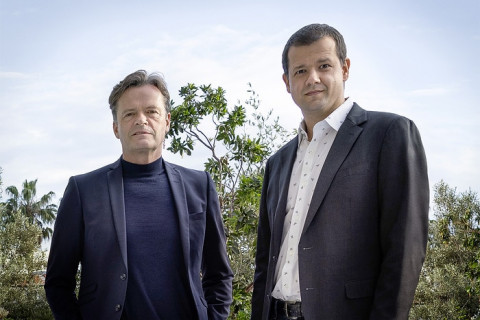German luxury carmaker Mercedes Benz announces that it is going to collaborate with a battery materials company, Sila. Together they are going to work on anode chemistry in batteries. This technology is expected to be first included in Mercedes-Benz G-Class.

With this, the Mercedes Benz portfolio will include another innovative cell chemistry. The energy density of the battery will be increased with high-silicon anode material without losing any safety or performance parameters. With Sila technology the energy density increases by 20-40 percent, making it reach 800 Wh/I at the cell level. Such advancement would ensure Mercedes Benz will be able to store more energy in the vehicle and increase the vehicle range.
Manufacturing of the silicon anode material will be made using 100 percent renewable energy. Sila’s New Washington state facility will be utilized to make the material. This factory officially announced its first automotive consumer publicly, Mercedes Benz. With the target being mid-decade for a range extended-version, both companies are working on equipping it to electric G-Class. The vehicle will be made available with a new battery technology option.
Delivering materials
Sila received the investment from German OEM in 2019, it was part of the company’s research and development of advanced batteries for EVs.
Gene Berdichevsky, Co-founder, and CEO, of Sila, said, “We’re focused on delivering materials that are cost-efficient and capable of delivering on the promise of electric vehicles, working to ensure long-range energy, improved charge times, and lowering battery cost per kWh. To realize the potential of next-generation materials, scale-up is a pivotal part of execution and we’ve been building towards automotive quality standards and scale. With our new plant in Washington, we’re ensuring we can meet the requirements of our auto partners like Mercedes-Benz as they transition to a fully electric future.”
According to previous announcements, Sila Nanotechnologies’s plant will be ready to produce sufficient silicon-based anode materials for 10 GWh of battery cells per year (assuming full graphite replacement). If someone would like to use only a bit of silicon in its anode (like many battery manufacturers do today), it would be enough for 50 GWh/year.
Sila explains that it’s enough for 100,000-500,000 battery packs (100 kWh/unit). Production lines at the facility will start in the second half of 2024, while full production is set for 2025. If needed, the site has the potential for further expansion of up to 15-times to 150 GWh silicon-based anode materials. It is not known which other automakers will be collaborating to include this technology in their vehicles.











